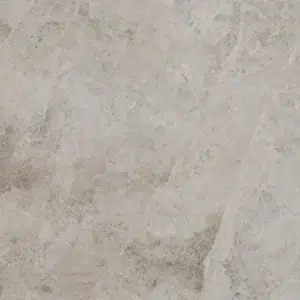Limestone Stairs
Our Limestone Stairs Range
Limestone Stairs Sydney
We often forget about the staircase while doing home repair projects. However, it’s among the things that guests notice right away when they walk into your house. Limestone stairs are an excellent option if you want to make a statement. In addition to their elegant touch, they provide durability and adaptability.
Why Choose Limestone for Stairs?
Limestone stairs are a statement piece that may improve the interior or external decor of your house, making them more than simply a practical feature. Limestone stairs blend in effortlessly with any design, whether you’re striving for a contemporary, rustic, or traditional aesthetic. But what exactly makes them unique? Now let’s discuss a few important topics.
- Cost-effectiveness: A common misperception about limestone stairs is their exorbitant cost. In the long term, nevertheless, they are a more affordable option given their durability and low maintenance needs. You may simply locate a price that meets your budget thanks to the many limestone steps suppliers near me.
- Durability: The natural stone limestone has an extraordinary level of durability. Both interior and outdoor limestone stairs may benefit from its ability to endure high foot traffic. In contrast to metal stairs that corrode or wooden stairs that decay, limestone stairs last for many years.
- Colour Varieties: Limestone is a versatile material due to its natural colours and textures. Limestone is available in a variety of colours, so you can choose the perfect colour for your project, whether you’re going for a beachy mood with a light beige or a more formal style with a dark grey.
- Maintenance: Maintaining limestone stairs is not that difficult. Most of the time, all it takes to keep them looking brand new is a quick wipe-down with a moist cloth or a light cleanser. They are thus a great option for hectic homes.
- Personalization: In a place like Sydney, personalization is a snap. You may design a staircase that is exclusively yours with the help of the many Limestone staircase Sydney suppliers that offer bespoke designs.
How to choose the right limestone for your staircase?
It’s important to choose the appropriate colour and style for your limestone stairs. Your space’s overall beauty may be enhanced or detracted from by it. With so many alternatives at your disposal, choosing one might be difficult. And don’t worry! This article will assist you in sorting through the options and choosing the ideal limestone step slabs for your house.
- Recognize the Aesthetic of Your House: It’s important to recognize the general style of your house before experimenting with the many limestone hues. Does it have a modern, classic, or hybrid feel? This style should be complemented by your staircase. For example, light, smooth limestone might work well in a modern, minimalist design, but a rustic setting could need a more textured, earthy tone.
- Think About the Location: A big factor in your choice is where your stairs are located. Because of weathering and use, outdoor limestone stairs may need a different finish or hue than inside ones. Choose a rougher texture for outdoor situations to avoid slippage, particularly when it’s rainy.
- Examine Before You Agree: Obtaining samples of limestone tiles or slabs is a good idea, much like painting a room with paint samples beforehand. This lets you examine how the stone appears against other objects in your area and in various lighting settings.
- Speak with Specialists: Expert advice should not hesitate to seek if you are uncertain. There are several limestone steps suppliers near me that provide consultancy services. They may offer you advice on what would be most appropriate for your particular requirements and style.
Exploring the Versatility: Different Finishes and Designs for Limestone Stairs
Because of its natural beauty and adaptability, limestone comes in a variety of finishes and patterns. The natural stone stairs are given a distinct personality by each finish, which makes them stand out. Limestone may be used in a variety of ways, depending on whether you like a more refined design or a more organic, rustic appearance.
- Polished polish: The limestone has a shiny, smooth surface thanks to this polish. It’s ideal for those who want a chic, contemporary appearance. However, it’s better used inside since it may be a little slick, particularly when wet.
- Honed Finish: Sleek and matte, an honed finish lacks the sheen of a polished finish. It works well for both indoor and outdoor limestone stairs because it has a more organic appearance and is less slick.
- Texture: The limestone has an aged, worn look because of the tumbled finish. It’s ideal for houses with a rustic or antique feel. Additionally, the rough texture improves grip, particularly outside.
- Brushed Finish: To create a somewhat rough surface, metal brushes are used to brush the limestone. It’s a midway texture between tumbled and polished surfaces.
How to Care and Maintain Limestone Stairs?
Caring for and maintaining limestone stairs is crucial to ensure they remain beautiful and functional over time. Here are some comprehensive tips:
- Regular Cleaning: Establishing a routine cleaning schedule is essential for maintaining the aesthetic appeal and functionality of limestone stairs. It’s advisable to use a soft bristle brush or a vacuum cleaner to remove dirt, dust, and debris from the surface. For a more thorough cleaning, a pH-neutral cleaner should be employed to avoid causing any damage to the limestone surface. It’s imperative to steer clear of acidic or alkaline cleaners as they possess the potential to etch or discolour the limestone, undermining its natural beauty.
- Sealing: The porous nature of limestone renders it susceptible to staining, which is why applying a high-quality sealant is crucial. A good sealant provides a protective coating that guards against stains and other potential damages. Re-sealing should be performed as per the manufacturer’s instructions, usually once a year or whenever water no longer beads on the surface, to maintain an optimal level of protection.
- Stain Removal: Prompt stain removal is a key aspect of limestone stair maintenance. For organic stains, such as those caused by coffee or tea, a mixture of hydrogen peroxide coupled with a few drops of ammonia can prove to be effective. On the other hand, oil-based stains can be tackled by creating a poultice with baking soda and water, applying it to the stain, allowing it to dry, and then cleaning the area thoroughly.
- Avoiding Damage: Preventing damage is better than curing it. Avoid dragging heavy objects across the limestone as it can cause scratches or chips on the surface. Placing doormats at the entrances is a simple yet effective way to catch dirt and debris, preventing them from being tracked onto the stairs and causing potential damage.
Conclusion
More than simply a useful component, limestone stairs are an enduring example of beauty, toughness, and adaptability. Whether you’re constructing a new house or remodelling an existing one, limestone stairs may improve the aesthetics of the area while also providing useful features. Your staircase may be a timeless piece of furniture that not only fits in with the design of your house but also looks good with the correct colour, pattern, and finish. Thus, keep in mind the beauty and sophistication that limestone stairs may provide to your house the next time you’re considering home remodelling projects.
FAQ (Frequently Asked Questions)
Why choose limestone for stairs over other materials?
Limestone stairs offer a compelling combination of durability and unique aesthetics. Unlike many other materials, limestone stairs can withstand the test of time, resisting wear and tear with grace. Their natural, elegant appearance adds a touch of timeless beauty to any space, making them a popular choice for those who value both longevity and aesthetics in their staircases.
How do I select the right limestone colour for my project?
Selecting the perfect limestone colour for your project is crucial to achieving the desired look. Consider the existing colour scheme and design of your space. Limestone comes in a range of colours, from warm beige to cool grey and even earthy tones. Sample various colours in your space and assess how they interact with the lighting conditions. This will help you identify the ideal limestone colour that complements your design and creates a harmonious atmosphere.
Can I use limestone stairs outdoors?
Yes, you can use limestone stairs outdoors. Limestone is a durable natural stone that can withstand various weather conditions. It’s a popular choice for creating elegant outdoor staircases, garden paths, and patio steps. However, to ensure the longevity of outdoor limestone stairs, proper sealing and maintenance are essential.
What maintenance is required for limestone stairs?
Maintaining the beauty of limestone stairs is relatively straightforward. Regular cleaning with a pH-balanced stone cleaner is important to prevent the buildup of dirt and grime. Additionally, it’s advisable to periodically reseal limestone stairs to protect them from staining and moisture penetration. General upkeep involves addressing minor damage promptly, such as chipping or cracks, to prevent further issues.
Are limestone stairs expensive compared to other materials?
The cost of limestone stairs can vary based on factors such as the type of limestone, the complexity of the design, and the location of installation. While limestone stairs are not the least expensive option, their durability and timeless aesthetic make them a valuable long-term investment. The cost may be higher upfront, but the longevity and elegance they bring to your space make them a cost-effective choice over time.
Is professional installation necessary for limestone stairs?
Professional installation is highly recommended for limestone stairs. Limestone is a natural stone with unique characteristics, and installing it correctly requires expertise. Professional installers have the knowledge and experience to ensure that the stairs are structurally sound, level, and secure. Their expertise also extends to proper sealing and maintenance recommendations, which are essential for the longevity of your limestone stairs. Opting for professional installation ensures the best results and peace of mind.








